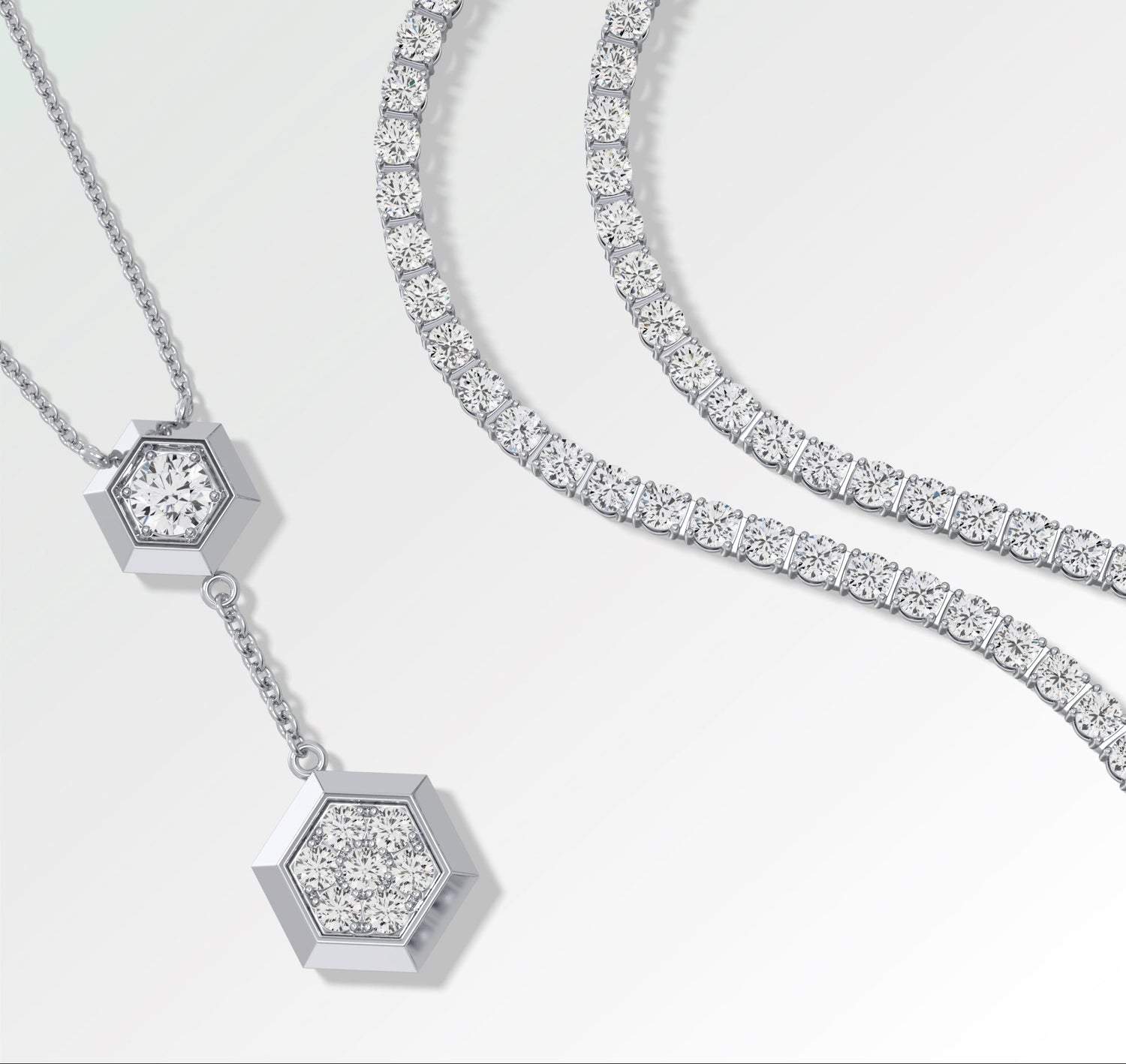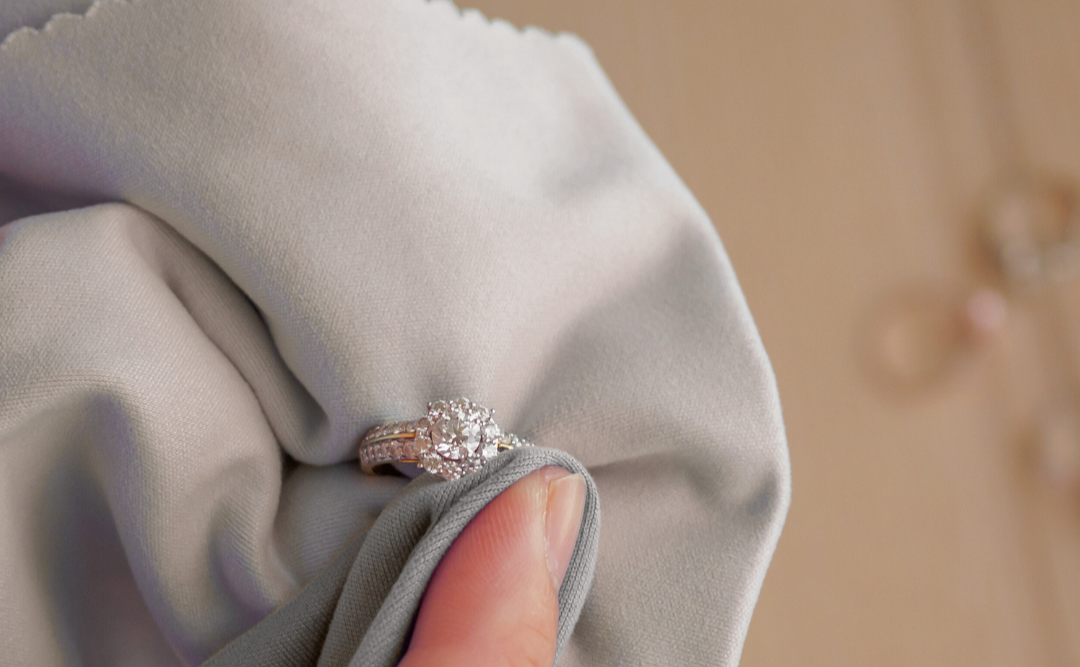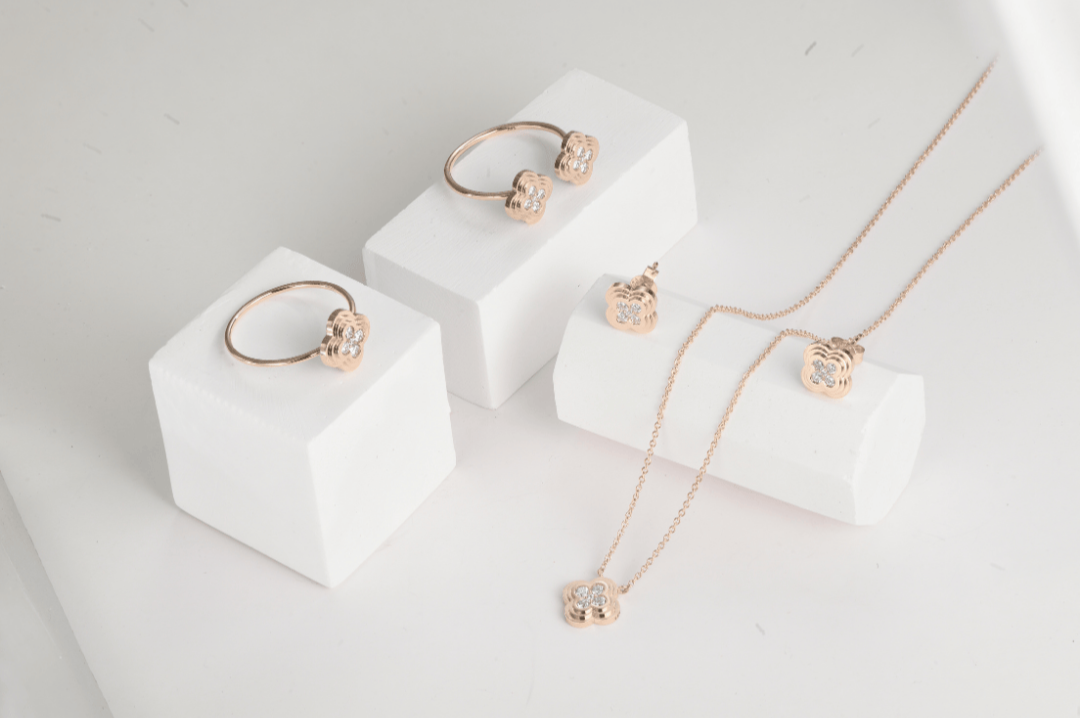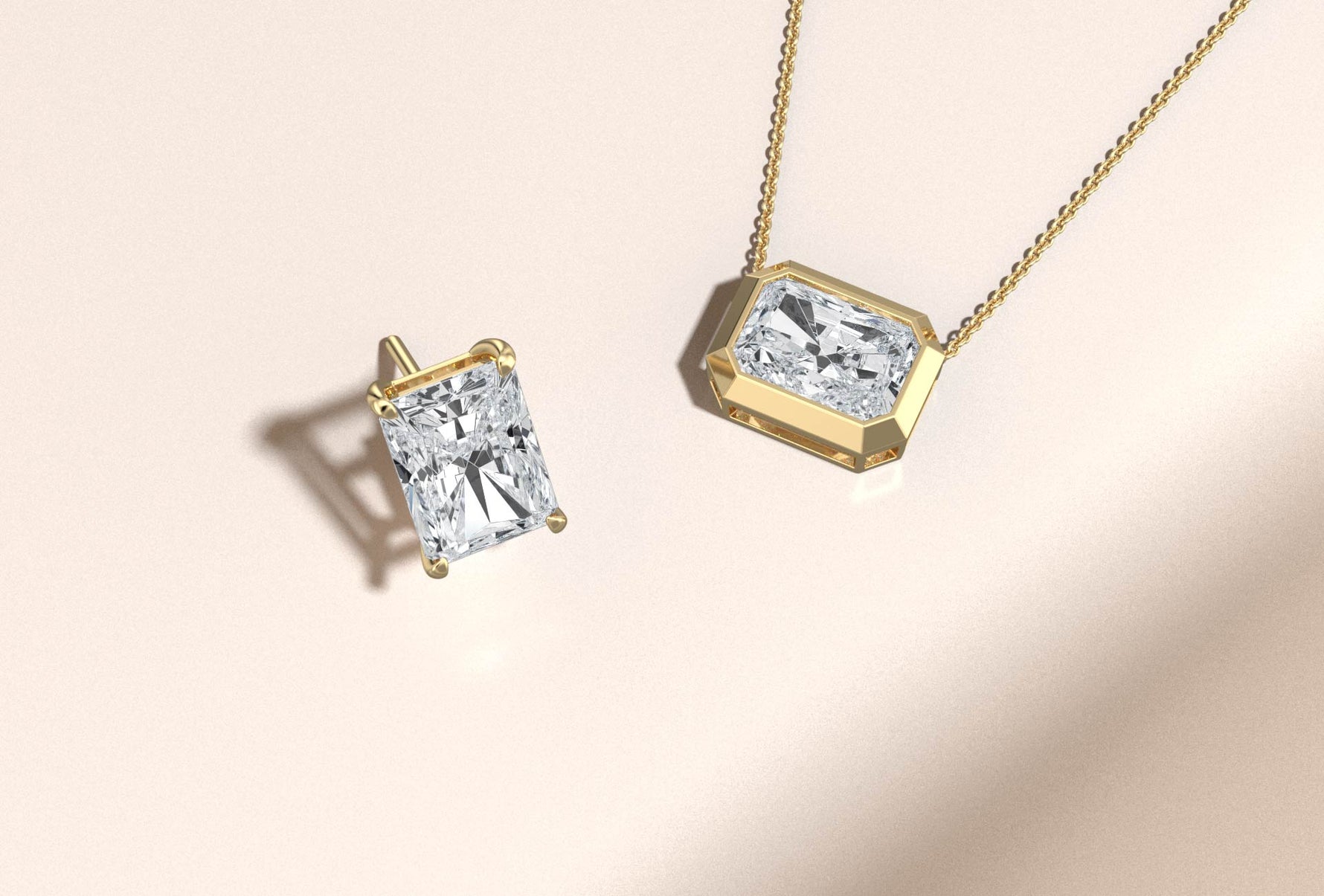IN THIS GUIDE:
- How to clean lab-grown diamond jewelry?
- DIY Cleaning Methods At Home
- DIY Cleaning Methods That Actually Work
- How to clean gold jewelry with diamonds?

How to clean lab-grown diamond jewelry?
Most people don't realize that lab-grown diamonds can show dirt and grime more easily than natural ones. It's not that they're lower quality. Quite the opposite. Lab-grown diamonds often have fewer internal inclusions, which means their surfaces are like perfectly clean windows. Every smudge shows up more clearly.
What makes your diamonds dirty?
- Skin oils from daily wear
- Hand lotions and skincare products
- Soap residue from washing hands
- Makeup and hairspray
- Environmental dust and grime
- Cooking oils (yes, even from just being in the kitchen)
The good news is that lab-grown diamonds are so durable, they can handle cleanings better than many people think.
DIY Cleaning Methods That Actually Work
The Gentle Soap Soak (Your Go-To Method)
This is my favorite method for most people because it's safe, effective, and uses stuff you already have at home.
What you'll need:
- Mild dish soap (Dawn works great)
- Warm water (not hot, around 100°F)
- Soft-bristled toothbrush (clean, obviously)
- Lint-free cloth or paper towels
The 5-step process:
- Mix your solution: Add 2-3 drops of mild dish soap to a cup of warm water
- Soak for 10-15 minutes: Let your jewelry sit in the solution
- Gentle brushing: Use the soft toothbrush to work around prongs and behind the stone
- Rinse thoroughly: Use clean warm water, soap residue is sparkle's enemy
- Pat dry: Never rub or wipe aggressively; pat with a lint-free cloth
Tip: Do this over a towel-lined sink. Trust me on this one.
The Cocktail Glass Ultrasonic Hack
Don't have a fancy ultrasonic cleaner? Here's a clever workaround that actually works pretty well.
Fill a small glass with your soap solution, drop in your jewelry, then place that glass inside a larger bowl filled with warm water. The vibrations from gently tapping the outer bowl create mini ultrasonic-like action. It's not as powerful as professional equipment, but it helps loosen stubborn grime.
Choosing Non-Abrasive Jewelry Cleaners
If you want to buy a commercial cleaner, look for ones specifically labeled "diamond-safe" and "gold-safe." Avoid anything that says "silver cleaner" or contains ammonia if you have white gold pieces. Because these can damage the rhodium plating.
My rule of thumb: if the cleaner doesn't specifically mention diamonds and gold together, skip it.

When to Call in the Professionals
Ultrasonic Cleaning: The Heavy Artillery
Professional ultrasonic cleaners are incredibly effective, but they're not magic. They use high-frequency sound waves to create tiny bubbles that knock dirt loose from every tiny crevice.
When ultrasonic makes sense:
- Your jewelry hasn't been cleaned in months
- You notice buildup behind the stone
- DIY methods aren't cutting it anymore
How often? Every 3-4 months for pieces you wear daily, or twice a year for special occasion jewelry.
Important note: Some settings with delicate prongs might not be good candidates for ultrasonic cleaning. A professional can assess this.
Steam Cleaning: For the Really Stubborn Stuff
Steam cleaning uses high-temperature vapor to blast away grime. It's incredibly effective but should really be left to professionals, the equipment gets extremely hot and requires proper handling.
Gemologist Inspections: Your Insurance Policy
While your jewelry is getting professionally cleaned, have the gemologist check your prongs and settings. Loose prongs are way more common than people realize, and catching them early can prevent losing your stone.
I recommend professional cleaning and inspection every 6 months for engagement rings and other pieces worn daily.

How to clean gold jewelry with diamonds?
Here's where things get tricky. Gold and diamonds have different cleaning needs, especially if your gold is plated (like white gold with rhodium plating).
The Two-Phase Soak Method
Phase 1 - Gold Focus (2-3 minutes):
- Use a slightly more diluted soap solution
- Focus on the metal parts, avoiding the diamond initially
- This prevents any metal-specific cleaners from affecting the stone
Phase 2 - Diamond Deep Clean (10-15 minutes):
- Switch to the standard diamond cleaning solution
- Now focus on the stone and its setting
- Use your soft brush around the diamond and prongs
Gentle Brushing Techniques That Won't Scratch
The right brush matters: Use a soft-bristled toothbrush, not medium or firm. Baby toothbrushes work even better.
Brushing angles:
- Brush away from prongs, not toward them
- Use circular motions on the diamond's surface
- Get behind the stone where grime loves to hide
For gold bands: Brush with the grain of any textured surfaces, not against it.
Safe Polishing Cloths: The Right Tool for Each Job
Keep two separate polishing cloths: one for gold, one for diamonds. Mixing them can transfer residues that dull your stones.
For gold: Use cloths specifically designed for your gold type (yellow, white, rose)
For diamonds: Microfiber cloths work great and won't scratch.

Chemical Hazards to Avoid at All Costs
Never use these on diamond jewelry:
- Bleach (can damage gold alloys)
- Chlorine (pools and hot tubs are jewelry killers)
- Hairspray (builds up a film that's hard to remove)
- Sunscreen (creates a stubborn coating)
When to take off your jewelry:
- Swimming (chlorine + jewelry = bad news)
- Heavy cleaning (household chemicals are harsh)
- Working out (sweat and impact aren't great)
- Gardening (dirt gets everywhere, and tools can scrat
About the Author: Vivian has over 10 years of experience in jewelry care and restoration, specializing in modern lab-grown diamond pieces. She holds certifications in gemstone care and has helped thousands of customers maintain their jewelry's beauty and value.
Explore Collections
FAQs
For daily-wear pieces like engagement rings, a quick soap soak weekly and thorough cleaning monthly. For occasional-wear jewelry, cleaning every 2-3 months is fine
Small home ultrasonic cleaners can work, but use them sparingly and only with appropriate cleaning solutions. Professional-grade machines are much more effective.
Never. Bleach can damage gold alloys and create pitting or discoloration that's expensive to repair. Stick to mild soap solutions.
Pat dry with a lint-free cloth, then let air dry completely before storing. Trapped moisture can cause problems over time.
Cloudy film is usually buildup from lotions, soaps, or environmental grime. A thorough cleaning with mild dish soap usually removes it. If not, professional cleaning might be needed.





